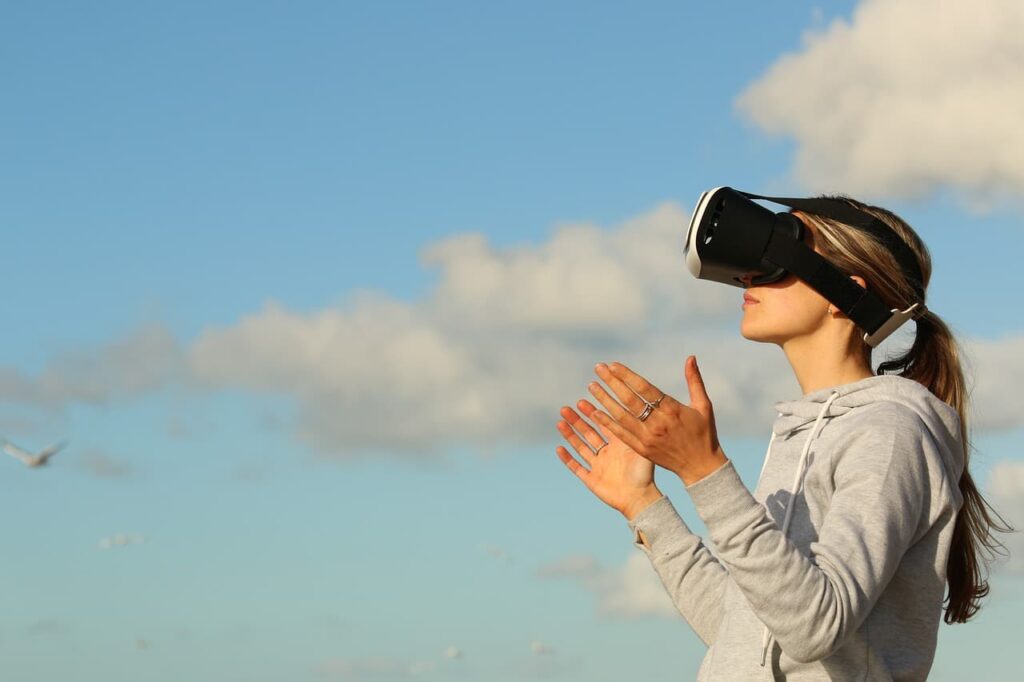In the ever-evolving landscape of education, technology continues to play a pivotal role in shaping the way students learn and engage with information. One of the most transformative advancements in recent years is the integration of Virtual Reality (VR) into the classroom setting. This immersive technology has opened up new educational frontiers, enhancing learning experiences, facilitating virtual field trips, and providing hands-on training across various fields.
Enhancing Learning Experiences: A Journey Beyond Textbooks
Traditional teaching methods often rely on textbooks, lectures, and static images to convey complex concepts. Virtual Reality takes education to new heights by providing students with immersive and interactive learning experiences. Instead of reading about historical events or scientific processes, students can now step into a virtual world that brings these subjects to life.
For instance, history classes can transport students to significant moments in time, allowing them to witness historical events firsthand. This firsthand experience fosters a deeper understanding and connection with the material, making learning more engaging and memorable.
In the realm of science, complex biological processes or astronomical phenomena can be visualized in three dimensions. Students can explore the intricacies of a cell or journey through the cosmos, gaining a profound understanding that goes beyond what traditional methods can offer.
Facilitating Virtual Field Trips: Beyond Classroom Walls

One of the most exciting applications of VR in education is its ability to facilitate virtual field trips. For schools with budget constraints or logistical challenges, VR provides an affordable and accessible alternative to traditional excursions. Students can explore ancient civilizations, visit renowned museums, or dive into ecosystems without leaving the classroom.
Imagine a geography class where students can stand on the Great Wall of China, walk through the Amazon rainforest, or explore the depths of the Grand Canyon. Virtual field trips not only broaden students’ perspectives but also make learning geography, history, and other subjects a truly immersive adventure.
Providing Hands-on Training: Bridging Theory and Practice
In addition to enhancing theoretical knowledge, VR brings a hands-on dimension to education. This is particularly valuable in fields where practical experience is essential. For example, medical students can utilize VR simulations to practice surgeries or diagnose virtual patients. This hands-on training allows them to refine their skills in a risk-free environment before entering the operating room.
Similarly, engineering students can engage in virtual labs where they can experiment with concepts in physics, chemistry, and electronics. These simulated environments provide a safe space for trial and error, fostering a deeper understanding of scientific principles.
Beyond traditional academia, vocational training benefits immensely from VR applications. Whether it’s learning automotive repair, plumbing techniques, or culinary skills, VR allows students to hone their craft through realistic simulations. This approach bridges the gap between theory and practice, ensuring that graduates are well-prepared for the demands of their chosen professions.
Overcoming Challenges and Expanding Access
While the integration of VR in education brings tremendous benefits, challenges such as cost, technical requirements, and the need for specialized training for educators still exist. However, as technology advances, costs are likely to decrease, and user-friendly platforms will become more prevalent, making VR more accessible to educational institutions.
Moreover, the potential for virtual reality to democratize education is vast. It has the power to level the playing field, providing students from diverse backgrounds with equal access to high-quality educational experiences. As the technology becomes more widespread, it has the potential to bridge gaps in educational resources, ensuring that all students, regardless of their geographical location or socioeconomic status, have access to a world-class education.
The Future of Education: A Virtual Horizon
As we peer into the future of education, it’s evident that Virtual Reality is poised to become an integral part of the learning experience. The immersive and interactive nature of VR not only captures students’ attention but also nurtures a curiosity and passion for learning. As the technology continues to evolve, educators, policymakers, and innovators must collaborate to harness its full potential and ensure that the educational frontiers it opens up benefit students worldwide.
In conclusion, Virtual Reality in the classroom is not just a technological novelty; it’s a transformative force that has the potential to revolutionize the way we educate future generations. From enhancing learning experiences to facilitating virtual field trips and providing hands-on training, VR is breaking down the barriers of traditional education, paving the way for a more immersive and inclusive learning environment. The educational landscape is evolving, and Virtual Reality is at the forefront of this educational revolution, offering a glimpse into a future where the boundaries of the classroom are no longer confined by walls but expanded by the limitless possibilities of virtual exploration.